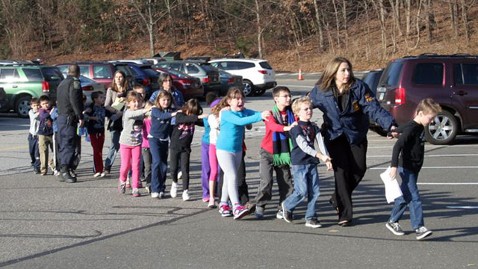The Kashmir Valley is on the fourth day of a government-imposed shutdown begun immediately after the hanging of the militant Muhammad Afzal, also known as Afzal Guru, who comes from the town of Sopore in Baramulla district.
Many residents are running out of food and milk in Srinagar, Kashmir’s summer capital. Meanwhile, dozens have been injured and at least one killed in protests against Mr. Afzal’s hanging, which happened secretly in Delhi on Saturday and was announced afterward.
Mr. Afzal, from the Jaish-e-Muhammad militant group, was convicted of conspiracy and sentenced to death by a special court in 2002 for his role in planning an attack on India’s Parliament in December 2001.
Schools, colleges and most shops in Kashmir are closed by government order, and people have been asked to stay inside their homes. Rows of shops and restaurants were shuttered.
Vehicles have been banned from the streets, cable news channels have gone dark, Internet service on cellphones has been blocked and newspapers were not being delivered. Hospitals, pharmacies and emergency services remain open.
In Srinagar, the only people in the deserted streets were security forces.
Officials in the area said they were taking preventive measures. During the past decade, many Kashmiris have opposed the death sentence for Mr. Afzal, saying he was being unfairly accused of the crime. His wife had requested a pardon from the Indian government, but her plea was denied.
Many Kashmiris were also outraged that the government letter carrying the news of execution reached Mr. Afzal’s widow in Sopore only after he died. The central government said Tuesday that Mr. Afzal’s family could visit his grave at te Tihar Jail in Delhi, but a date has yet to be decided, according to the Press Trust of India.
The ban on the movement of people and vehicles was imposed under Section 144 of India’s criminal procedure code, the same section invoked after protests over the recent Delhi gang rape, which prohibits the assembly of more than four people.
It was invoked by a district magistrate to prevent “a law and order problem,” Suresh Kumar, principal secretary in Jammu and Kashmir’s Department of Home Affairs, said in a telephone interview Tuesday.
Mr. Afzal’s death was mourned across the valley through organized street protests that involved stone pelting, in defiance of the ban.
Three civilians have died and many have been injured over the last four days, officials said. Some news reports attributed all three deaths to protest-related activities, but Mr. Kumar said only one man died of injuries caused by the police. The other two drowned when their boat capsized, an incident unrelated to the violence, he said.
Obair Mushtaq, from the Baramulla district, died after he was shot, his relatives said. Farooq Ahmed, his uncle, said Obair was 13.
Mr. Ahmed said that on Sunday evening, a handful of children, including his nephew, were throwing stones at a passing military convoy. “It was not aggressive. We were laughing at them,” he said, crying over the phone. “We can’t understand why there is so much fighting. Why are our children dying?”
A Kashmir police official told India Ink that 60 people have been injured since Saturday in clashes between police and civilians. Forty of those were security officials and 20 were civilians, he said. He spoke on the condition of anonymity, saying that he feared for his life.
Additionally, there were about 60 incidents of stone pelting across the valley. “Most of the violence erupted in Sopore and Baramulla,” he said.
“People are not allowed to step out of their homes,” he added.Many residents described the past four days as the longest curfew since 2010, when the valley was shaken by mass pro-independence demonstrations.
Manzoor Ahmed, who drives an auto-rickshaw, said that he hasn’t earned any money since the curfew was imposed on Saturday. “I haven’t stepped out of the house so I cannot even make the little money I do,” he said during a telephone interview. “The children cannot go to school.”
Mr. Ahmed said that his family was surviving on dal, a stew made of lentils, because there are no fresh vegetables available. “We have a backup supply of dal because we know things like this can happen,” he said.
In some areas, for a few hours in the evening, residents said they were allowed out of their homes to shop. Vegetables and milk are generally shipped into Srinagar, which is nestled in the mountains, from villages and other states during the winter months.
Mr. Mohammed, a hotel manager near the Dal Lake, who requested his first name not be used to avoid any retaliatory action, said that his hotel was running out of vegetables like peas and cauliflower, and guests were only being served beans and potatoes from storage. “The situation is quite bad,” he said.
For around two hours in the evening, a few stores selling basic groceries were open. But these shops have limited resources because the supply chain had been disrupted because of the ban on vehicles.
One businessman, who requested not be named to avoid possible retaliatory action by the police, said he hasn’t opened his crockery shop in downtown Srinagar in the past four days. “What choice do I have? They won’t let us step out,” he said. He estimated he has lost 60,000 rupees ($1,000) since Saturday.
The hanging of Mr. Afzal came as Kashmiris were planning protests to mark the death of Maqbool Bhatt, a pro-Kashmir independence leader who was hanged on Feb. 11, 1984. His death is considered the spark for two decades of unrest. Both men are buried at Tihar Jail in Delhi.
“Maqbool Bhatt inspired the insurgency while Afzal Guru was the product of it,” said Sheikh Showkat Hussain, a law professor at Kashmir University.
He warned that Mr. Afazal’s hanging and the subsequent curfew would make the Kashmiri people’s “alienation with the government more deep rooted.”
















